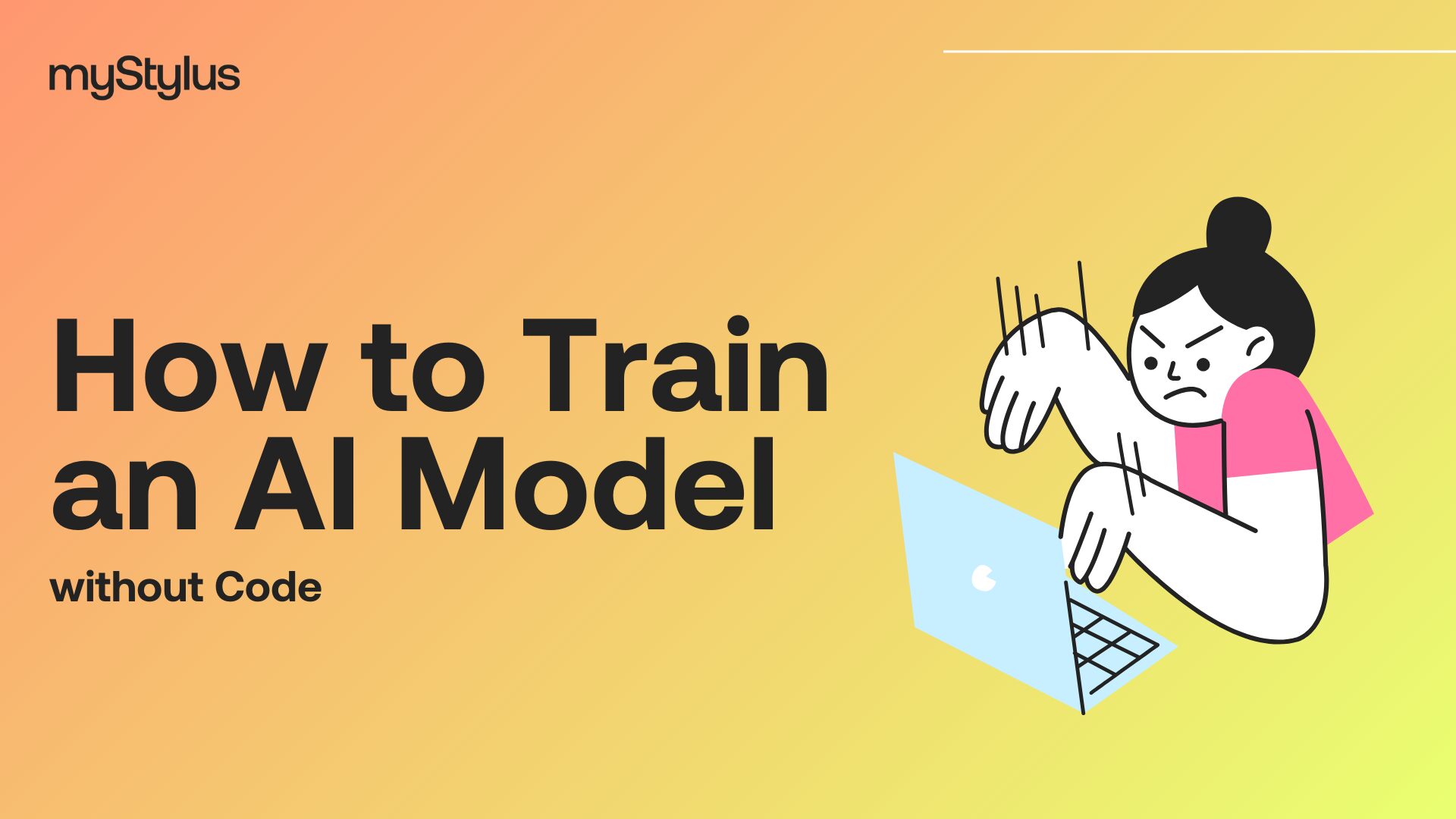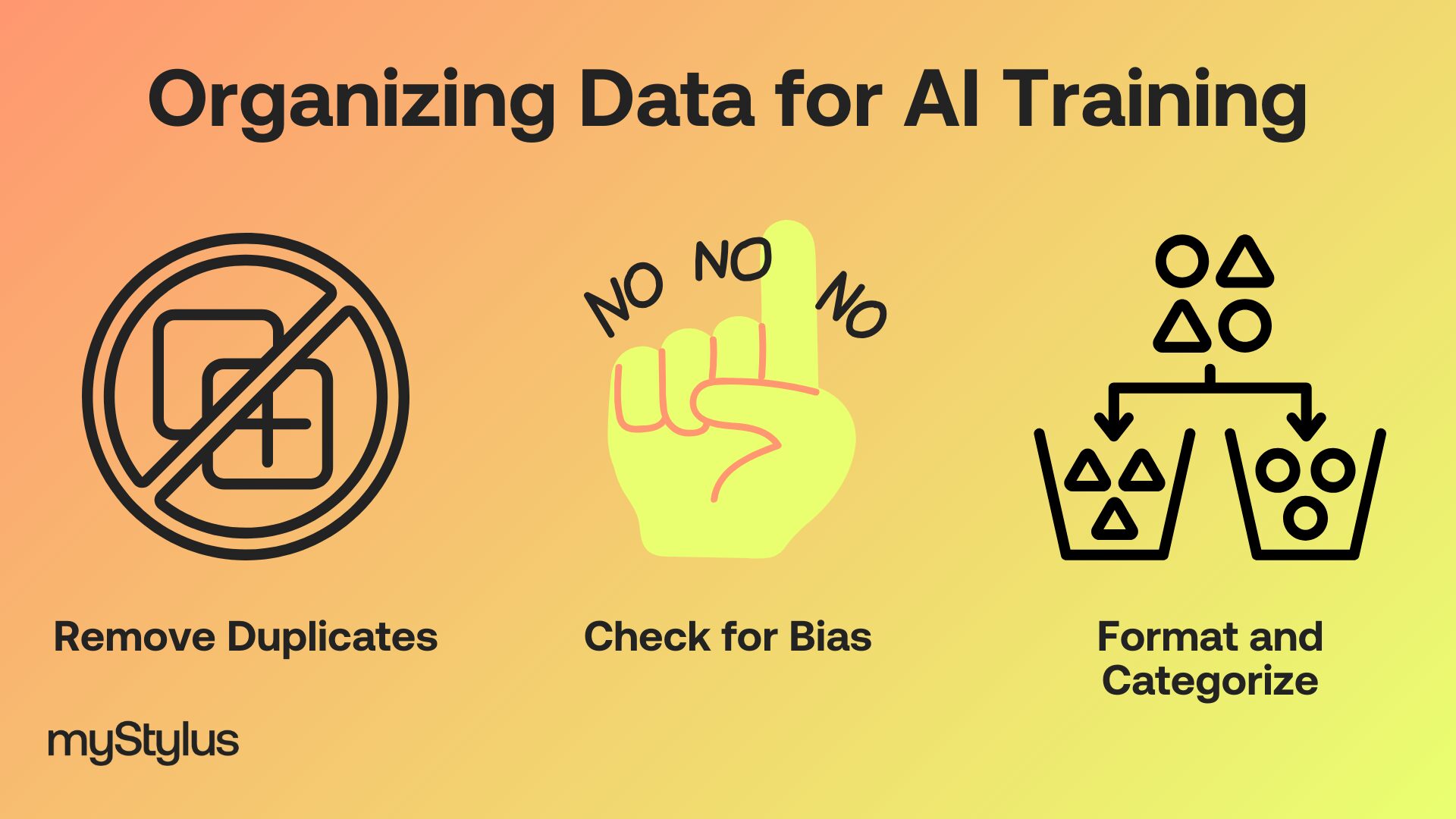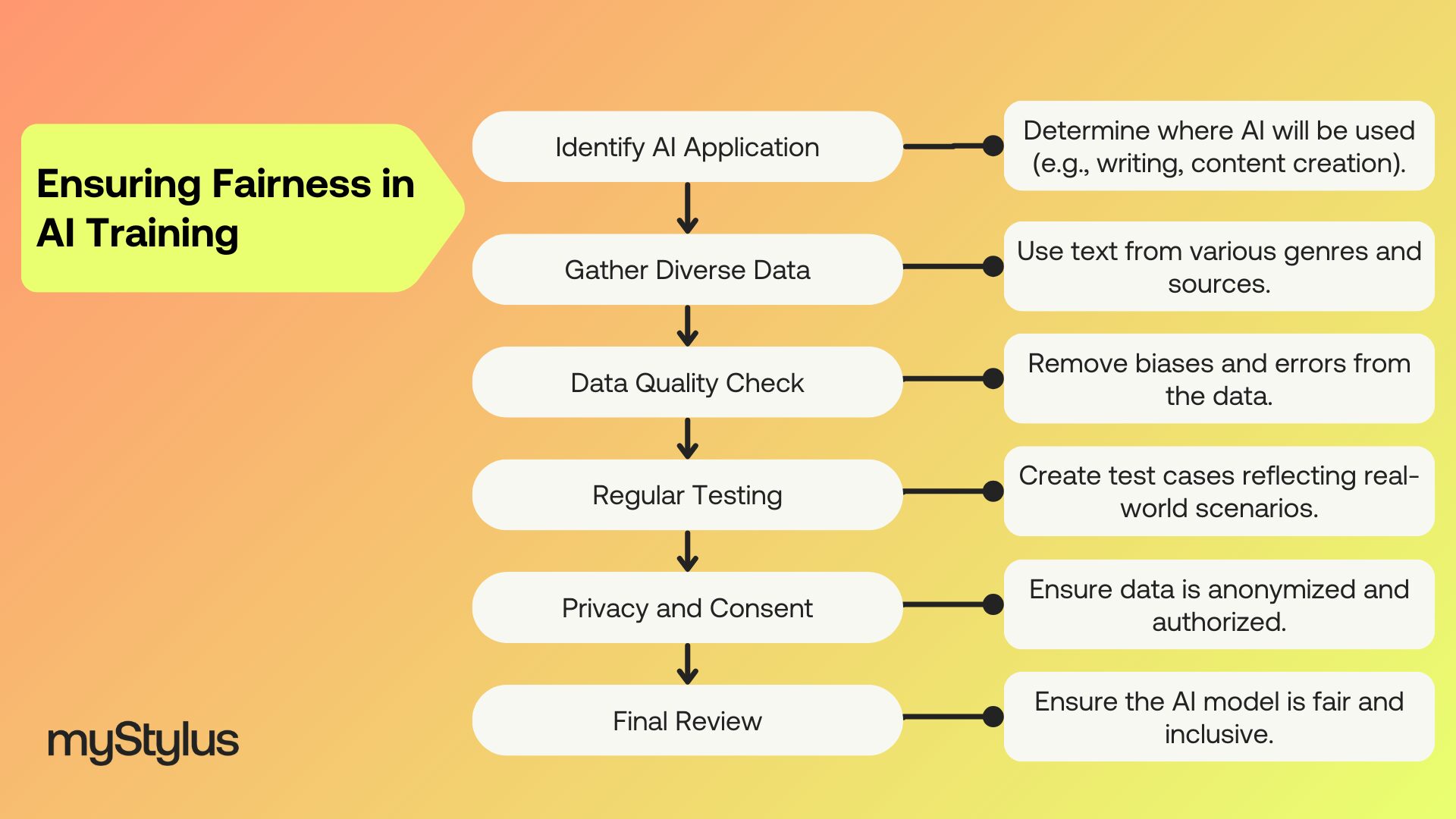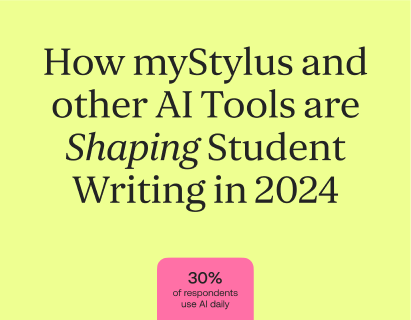How to Train an AI Model without Code
- January 19, 2025
- 7 mins read

Speaking of AI-generated content, there’s a lot of noise about AI and LLMs on the Internet. To be fair, since they’ve come out, that’s all anyone’s talking about. Some have taken to complaining, and some have taken to combing through human vs. AI-generated texts.
In 2024, many people have figured out how LLMs work and now understand their content-making patterns. Think of LLM as a smart parrot that’s read every book, blog, and meme on the internet. These models are designed to generate text that sounds like it was written by a human. So, why are people complaining?
If an LLM can write your essays, emails, and more, what’s all the fuss about? It’s generic and monotonous.
So, how is it that people still seem to use it despite this obvious flaw? The answer is model training. AI programs are easily trained to write and sound like you. In no time, they can also make the same bad jokes as you!
So here is a beginner-friendly, no-code guide to get you started with training an AI model. No fancy programming skills are needed. By the end of this, you’ll have your own AI buddy who writes just like you.
Understanding AI Training: A Non-Techie Guide
Alright, let’s break down how to train an AI model in layman terms. You feed the AI data and teach it how to use it. The trick is to give it the right prompts. Guide the AI model in making decisions, recognizing patterns, and picking up your writing voice.
There are many ways to train AI model. From deep neural networks to decision trees, they’re all apt choices. However, when training the model to write like you, there are three main techniques to master.
| Feature | Supervised Learning | Unsupervised Learning | Reinforcement Learning |
| Training Data | Labeled examples (e.g., essays, blog posts) | Unlabeled data | No initial prompts; system starts from scratch |
| Goal | Learn vocabulary, tone, and style from labeled examples | Discover patterns and group similar items | Improve text generation through feedback |
| Learning Process | Analyzes and learns from labeled samples | Sorts and identifies patterns without labels | Generates text and learns from feedback (rewards/penalties) |
| Improvement Mechanism | More labeled samples lead to better mimicry of writing style | Identifies broad structural and tonal similarities on its own | Improves based on provided critiques and feedback |
| Supervision Level | High (direct supervision with labeled data) | Low (no labels, self-exploration) | Intermediate (feedback-driven learning) |
| Application Example | Upload labeled writing samples (e.g., essays, blog posts) | Upload writing samples without labels | Let AI generate text and provide critiques |
| Output Accuracy | High accuracy due to learning from correct examples | Identifies general patterns, may lack precise mimicry | Depends on quality and frequency of feedback |
| Complexity of Tasks | Suitable for tasks requiring high precision (e.g., style replication) | Suitable for discovering hidden patterns (e.g., clustering) | Suitable for tasks needing sequential decision-making and improvements |
| Feedback Mechanism | Immediate feedback based on labeled data | No immediate feedback, patterns emerge over time | Feedback through rewards and penalties for generated text |
Training an AI model doesn’t have to end when it can write texts like you do. You can train it to recommend movies you might like based on your viewing history. Train it to tag your friends in pictures; remember how Google Photos does it? Same logic! Next thing you know, the AI is doing all your work.
Training AI Model: The Prep Work
Before you dive into how to train AI, you need to start by choosing the problem you want to solve. Think about what you want your AI to do. Do you want an essay that sounds like you wrote it? Or a blog post that paints pictures like Van Gogh, perhaps?
With that in mind, you have to set out to gather data.
Data is where it all begins and where the AI model will learn. You cannot feed it Stephen King novels and ask it to write Taylor Swift lyrics. Or can you? Well, that’s a “how to train AI” guide for another post.
Once you have your data in hand, you have to get to organizing it. This step ensures your model learns effectively and avoids common pitfalls. Here’s what you need to do:
|
☝️
Remove Duplicates
|
Duplicate data can skew the training process and lead to inaccurate predictions. |
|
🔎
Check for Bias
|
Balanced and unbiased data is key to good results. It’s not impossible to collate this, but it’s difficult. Don’t worry, though; if you see biases in your results, you can always add more data to remove these discrepancies. |
|
📄
Format and Categorize
|
Properly structured texts with clear sentences and paragraphs provide a consistent format. This includes categorizing your data. A picture of a dog in a folder full of cat images is a disaster waiting to happen. We don’t want to confuse the model while it’s still in its training stage. |

Alright! Your data is ready to be inserted into the model! Now, this is where the fun begins! Brace yourself for the magic that is, Algorithm!
How to Train AI Model
Okay, here begins the algorithmic magic. It’s where data goes in, and content is churned. But training an AI model, with all the technical jargon, may seem daunting. With the right platform and approach, however, it is a piece of cake!
Finding the Right Platform
Let’s start by finding a platform that allows you to train your own chatbots with your data. Several user-friendly options for AI data training include OpenAI’s GPT-3 Playground, Google’s AutoML and Amazon SageMaker.
The Training Process
Once you’ve chosen a platform, the training process is very straightforward.
- Upload Your Data to the Platform: This could include a variety of texts, such as essays, articles, or emails, relevant to your project.
- Show the AI Examples: AI data training entails presenting the AI with examples from your dataset. This process allows it to learn patterns, structures, and nuances present in your writing style.
- Let It Learn: The AI then analyzes these examples to understand how sentences are constructed. It picks on the vocabulary used and how different topics are approached.
Over time, it learns to generate text that mimics your voice and style.
Monitoring and Adjusting
Keep an eye on the AI’s progress and make adjustments as necessary.
- Regular Check-ins: Periodically review the AI’s output to assess its performance. Look for consistency, accuracy, and relevance to your writing style.
- Adjust Parameters: If the AI isn’t performing as expected, consider adjusting the training parameters. This could involve modifying the amount or type of data used for training.
- Identify Issues: Watch out for signs of overfitting or underfitting. Overfitting occurs when the AI learns too specifically from your data. Underfitting indicates it hasn’t learned enough to generate accurate outputs.
Check AI Performance
Now, we need to make sure the model is functioning at its peak. Here’s how.
- Sample Tests: Test the AI with new inputs to see how it responds. Evaluate its ability to generate text that aligns with your writing style and meets your requirements.
- User Feedback: Gather feedback from users or peers to gauge the AI’s performance. Their insights can highlight areas for improvement or refinement.
- Automated Metrics: Utilize the built-in metrics provided by the platform to assess the AI’s performance objectively. Metrics such as accuracy, coherence, and relevance can help measure its effectiveness.
With this arsenal, you can have a custom AI model that can write like you in no time!
Challenges in Training AI Models
Training AI models comes with its fair share of challenges, many of which stem from the complexity and diversity of data, as well as the limitations of current technologies. Recognizing these challenges is the first step to addressing them effectively.
- Data Bias
AI models are only as good as the data they are trained on. If the training data is unbalanced or biased, the model will likely produce biased outputs. For example, an AI trained primarily on Western literature may struggle to generate content that resonates with other cultural contexts. Ensuring diverse and representative datasets is crucial to avoid bias. - Overfitting and Underfitting
Overfitting occurs when the model learns the training data too well, to the point that it struggles to generalize to new inputs. Underfitting, on the other hand, happens when the model fails to learn enough from the data, resulting in inaccurate or irrelevant outputs. Striking the right balance requires careful tuning of training parameters and datasets. - Quality and Quantity of Data
High-quality, well-labeled datasets are often expensive and time-consuming to create. Meanwhile, using large volumes of raw or poorly labeled data can hinder the model’s ability to learn effectively. - Computational Costs
Training advanced models like GPT-4 demands significant resources, including powerful hardware and substantial energy consumption, which may not be accessible to everyone. - Ethical Concerns
Data privacy, consent, and fairness remain persistent hurdles. Training AI responsibly requires robust measures to protect personal information and prevent misuse.
Overcoming these challenges requires a combination of thoughtful data preparation, ongoing monitoring, and a commitment to ethical AI development.
AI Responsibility Is No Joke
Author and video game enthusiast Joanna Maciejewska hit the nail on the head when she said, “I want AI to do my laundry and dishes so that I can do art and writing, not for AI to do my art and writing so that I can do my laundry and dishes.”
Unfortunately, though, that is where we are at with AI. Since we’re using AI writing skills, we need to be responsible for what comes of it.
Just like people, AI can develop biases based on the data it’s trained on. This can lead to inaccurate predictions, incorrect statements, or, worse, biased conclusions. So, how do we deal with this? Here are some tips to ensure you train AI models to remain fair and unbiased:
|
📚
Use Diverse Data
|
During AI model training, be sure to use a wide range of text samples. These need to include a wide range of topics, styles, and moods. Your AI may have difficulty with creative writing or issues pertaining to the humanities if it is trained exclusively on scientific articles. |
|
🧑💻
Test Thoroughly
|
Check your AI’s performance on a regular basis using a variety of writing prompts. Build test cases that mimic real-world situations to make sure your model can adapt to various tasks. |
|
💯
Ensure Data Quality
|
Keep the AI from being misled and performing poorly. You should avoid using data that includes errors, biases, or unnecessary information. |
|
🔏
Privacy and Consent
|
Have the necessary authorization and anonymize any data that contains personal information before utilizing it. An important aspect of developing AI ethically is respecting people’s privacy. |
|
⏺️
Promote Fairness and Inclusivity
|
Make sure your AI model doesn’t promote bias or ignore important perspectives. For AI to produce more balanced results, it is important to train it with data that represents a variety of viewpoints. |

Encouraging Ethical Use
Understand the ethical implications of AI. Identify and mitigate bias and understand the importance of data privacy. Take responsibility for the AI you create and use. If your model produces inaccurate or biased outputs, address these issues and make necessary adjustments.
Finally, use AI to enhance learning and creativity. It’s not a tool to cut corners. Improve your writing with AI in a fair, responsible, and ethical manner. After all, the secret ingredient to your best work is you!
Why MyStylus Is Better
Academic writing is made much easier with MyStylus. It comes with pre-training done on a variety of academic works. It takes away the need for personal instruction in most cases.
The model isn’t only trained in academic works but also in styles, tones, and structures. This means you can also format it the way you want with a simple prompt.
MyStylus comes with an AI editor. This assistant will help you fine-tune the final product to fit your needs and your writing style. This way, you can avoid going through your writing collection and training the model from scratch.
By combining a pre-trained AI model with an intuitive assistant, MyStylus streamlines and improves your writing experience. In addition to helping you save time, this will guarantee that your academic work is accurate and of high quality. When writing any type of academic paper—essays, research papers, reports—MyStylus gives you the tools you need to succeed.
Use this easy and dependable alternative to training an AI model from scratch. This way, you can stop stressing out about academic writing and start enjoying it.
Conclusion
Finally, knowing what AI can and can’t do is essential for navigating the AI landscape. You will need effort and intuition in training AI models, all the while guaranteeing their fair and ethical use. MyStylus stands out as a top pick because of its AI assistant and pre-trained AI that is designed to assist with academic writing. We can ensure that LLMs are used in a fair, inclusive, and ethical manner by adopting responsible practices. With powerful tools like MyStylus, you can up the ante in terms of productivity, creativity, and innovation.
Resources
- Ask the expert: How can AI support writing and student learning? (2023, September 14). MSUToday | Michigan State University. https://msutoday.msu.edu/news/2023/ask-the-expert-how-can-ai-support-writing-and-student-learning
- Clarke, S. M. (2024, May 13). What is AI, how does it work and what can it be used for? BBC News. https://www.bbc.co.uk/news/technology-65855333
- Johnson, C. Y. (2024, February 2). AI trained on a baby’s experiences yields clues to how we learn language. Washington Post. https://www.washingtonpost.com/science/2024/02/02/how-humans-learn-language-ai-child/
FAQ
-
Where can I learn how to train AI model?
To train an AI model, you start by gathering data. Then, you choose a platform, upload your data, and let the AI model learn from the examples. Monitor its progress and make adjustments as needed. -
What is AI training?
AI training involves teaching an AI system to recognize patterns and make decisions. We do this by exposing it to large amounts of data. We further provide feedback to ensure the training is done right. -
Do I need a powerful computer to train an AI model?
Not always. A powerful computer can speed up the training process, but it’s not always necessary. Many platforms offer cloud-based solutions that can handle the heavy lifting. Stylus AI is a great option. -
Can I use my own data for training AI?
Yes, you can and preferably should use your own data to train AI. More so when you’re asking it to write like you. Using relevant and diverse data will create accurate and effective AI models. -
How long does it take to train your own AI model?
The time it takes to train your own AI model depends on various factors. These include the size of your data, the complexity of the model, and the computing power. It can range from hours to weeks. -
How do I know if my AI model is performing well?
You can assess the performance of your AI model by testing it with new data, evaluating its accuracy and consistency, and monitoring its output over time. Many platforms also provide metrics to gauge performance. -
Can I train an AI model without coding experience?
Yes, there are user-friendly platforms available that allow you to train AI models without requiring extensive coding knowledge. Platforms like Stylus AI often provide intuitive interfaces and guided processes to simplify the training process for beginners.

